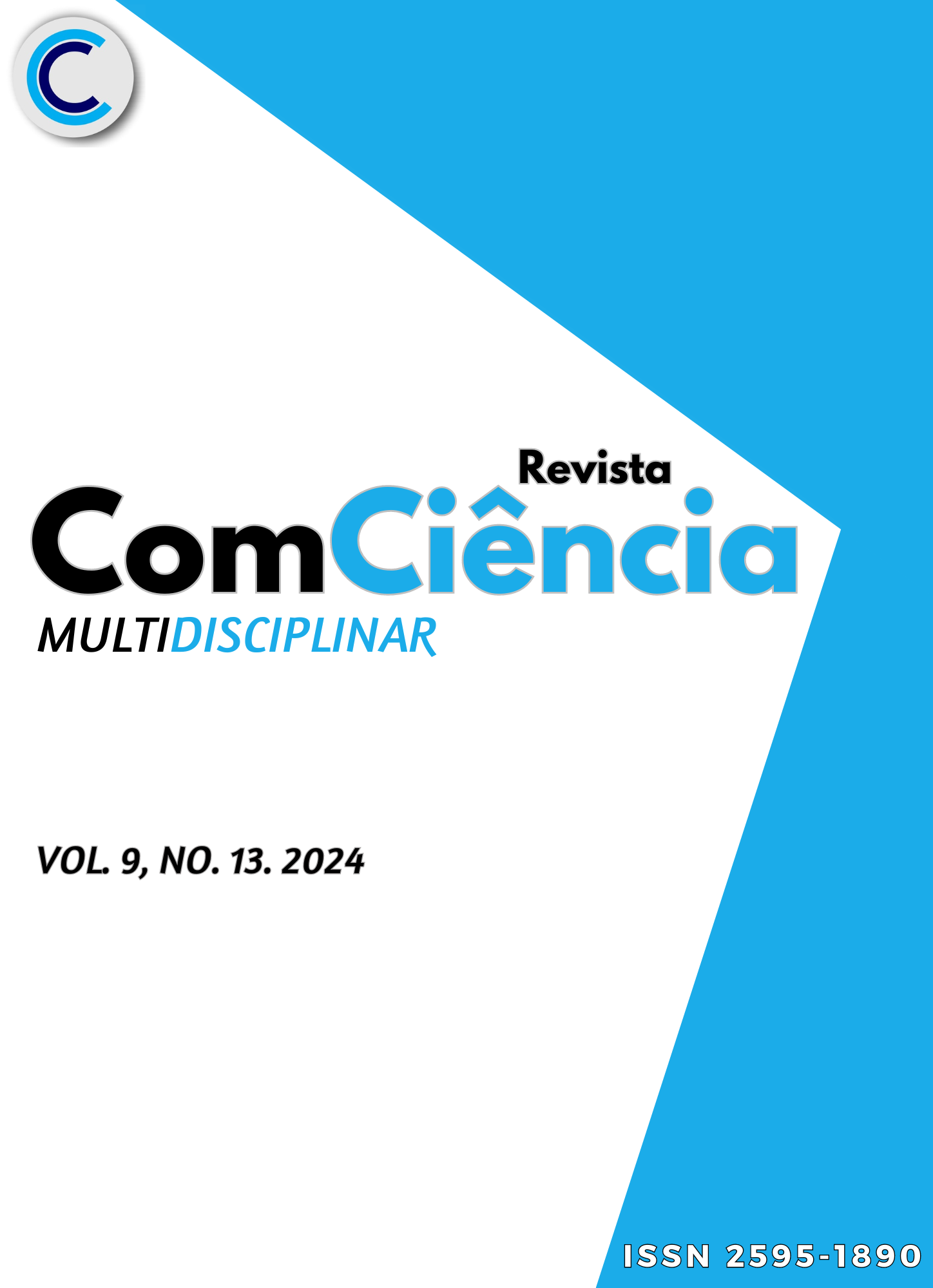Implementation of a nursery and production of native Cerrado seedlings as an Environmental Education strategy
DOI:
https://doi.org/10.36112/issn2595-1890.v9.i13.e9132402Keywords:
Environmental education, Seedling production, Seeds, Cerrado, NurseryAbstract
Environmental Education is a continuous and permanent process, which comprises educational actions for the formation of citizens related to the preservation and conservation of the environment. The environmental theme is increasingly relevant in school spaces, a good instrument for developing educational activities at school is the nursery, as it is capable of developing theoretical and practical awareness about environmental issues. From this, it is speculated how the production of Native Seedlings in a nursery will contribute to the critical-environmental training of students at a public school? The objective of this work was to build, in a participatory way, a seedling nursery with production of native species from the Cerrado within a school, aiming to promote learning and reflections that bring a critical look on issues relevant to Environmental Education, in addition to promoting and encourage afforestation in the community. The project was implemented in a school in the city of Luís Eduardo Magalhães, Bahia. The development of action research was carried out with 32 students and two science teachers. Questionnaires were applied, the nursery was set up and the logbook was written. When analyzing the students' environmental perception in the questionnaires, it was noticed that they did not have much understanding of the concepts related to the environment, lacking critical sense and argumentation. After carrying out the activities, there was an increase in the students' sense of reflection on environmental issues. Altogether 539 native seedlings from the Cerrado were produced for planting and distribution in the community. Ipe and tamboril were the species that obtained the highest amount of healthy seedlings, a total of 83 seedlings each. And the buriti was the species that achieved the least amount of healthy seedlings, only 16. It was concluded that the Environmental Education activities were of fundamental importance for the learning of the participating students, because through the practical knowledge acquired in the nursery, the sense can be improved criticism from participants about content related to environmental issues.
Downloads
References
ADRIANO, Jaime Rabelo et al. A construção de cidades saudáveis: uma estratégia viável para a melhoria da qualidade de vida? Ciência & Saúde Coletiva, v. 5, p. 53-62, 2000.
BRASIL. Política Nacional de Educação Ambiental. Lei 9795/99. Brasília, 1999.
BRASIL. Ministério da Educação. Vamos cuidar do Brasil: conceitos e práticas em educação ambiental na escola. Brasília: MEC, 2007.
BIONDI, D. Curso de arborização urbana. Curitiba: [sn], 2000.
BONONI, Vera Lúcia Ramos. Controle ambiental de áreas verdes. Curso de gestão ambiental. Coleção Ambiental. Manoele, Barueri, p. 213-255, 2004.
BOTELHO, S.A.; DAVIDE, A.C.; PRADO, N.J.S.; FONSECA, E.M.B. Implantação de Mata Ciliar. Belo Horizonte: CEMIG/UFLA/FAEPE, 1995. 36p.
BRANCALIONE, L. Educação ambiental: refletindo sobre aspectos históricos, legais e sua importância no contexto social. Revista de Educação do Ideau, v. 11, n. 23, 2016.
CAPOBIANCO, J. P. R. Mata Atlântica: conceito, abrangência e área original. In: A Mata Atlântica e Você: como preservar, recuperar e se beneficiar da mais ameaçada floresta brasileira. Brasília: APREMAVI, 2002.
DOS SANTOS NARCIZO, Kaliane Roberta. Uma análise sobre a importância de trabalhar educação ambiental nas escolas. REMEA-Revista Eletrônica do Mestrado em Educação Ambiental, v. 22, 2009.
FELFILI, J. M.; RIBEIRO, J. F.; FAGG, C. W.; MACHADO, J. W. B. Recuperação de Matas de Galeria. n. 21, p. 1-45. Dez. 2000.
IBGE – Instituto Brasileiro de Geografia e Estatística. Dados populacionais por municípios. Disponível em: < http://cod.ibge.gov.br/5PL>. Acesso em: 25 de outubro de 2018.
IBGE – Instituto Brasileiro de Geografia e Estatística. Dados populacionais por municípios. Disponível em:<http://cidades.ibge.gov.br/brasil/ba/luis-eduardo-magalhaes/panorama>. Acesso em: 09 de dezembro de 2023.
MARENGO, José A.; SOUZA JUNIOR, C. Mudanças Climáticas: impactos e cenários para a Amazônia. São Paulo: ALANA, 2018.
MEDEIROS, Aurélia Barbosa de et al. A Importância da educação ambiental na escola nas séries iniciais. Revista Faculdade Montes Belos, v. 4, n. 1, p. 1-17, 2011.
MONICO, Ilza Maria. Árvores e arborização urbana na cidade de Piracicaba/SP: um olhar sobre a questão à luz da educação ambiental. 2001. Tese de Doutorado. Universidade de São Paulo.
MÜLLER, K. S.; CAMARGO, I. P.; ALBUQUERQUE, M. C. F. Efeito de tratamentos pré-germinativos em sementes de buritizeiro, Mauritia vinifera. Informativo ABRATES, v.11, n.2, p. 269, 2001.
NOGUEIRA, A. C.; MEDEIROS, AC de S. Coleta de sementes florestais nativas. Embrapa Florestas-Circular Técnica (INFOTECA-E), 2007.
OLIVEIRA, M. C. de. Viveiro e produção de mudas de algumas espécies arbóreas nativas do Cerrado. Embrapa Cerrados, 76 p., 2005.
OLIVEIRA, F. R.; PEREIRA, E. R.; JÚNIOR, A. P. Horta escolar, educação ambiental e a interdisciplinaridade. Revista brasileira de Educação Ambiental, São Paulo, v. 13, n.2, p. 10-31, 2018.
PONTALTI, Edna Sueli. Projeto de educação ambiental: parque cinturão verde de Cianorte. APROMAC. Cianorte. Disponível em:< http://www. apromac. org. br/ea005. htm>. Acesso em, 01/11/2018, v.6, 2009.
RAMOS, José D. et al. Produção de mudas de plantas frutíferas por semente. Informe Agropecuário, v. 23, n. 216, p. 64-72, 2002.
VIRGENS, R. D. A. A Educação Ambiental no ambiente escolar. Brasília, 2011.
VOLPATO, G. Jogo e brinquedo: reflexões a partir da teoria crítica. Educação Social. Campinas, v. 23, n. 81, p. 217-226, 2002.
ZAIDAN, L. B. P.; BARBEDO, C. J.. 2004. Quebra de dormência em sementes. In: FERREIRA, A. G.; BORGUETTI, F. (orgs.). 2004. Germinação - Do básico ao aplicado. Porto Alegre: Artmed. 135-148 p.
Downloads
Published
How to Cite
Issue
Section
License
Copyright (c) 2024 Revista ComCiência, uma Revista multidisciplinar

This work is licensed under a Creative Commons Attribution-ShareAlike 4.0 International License.





